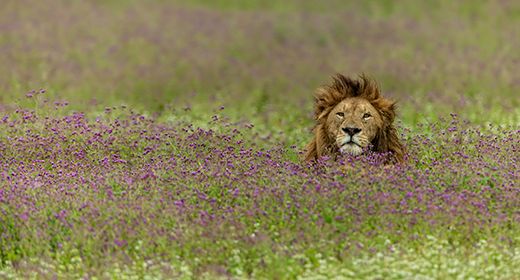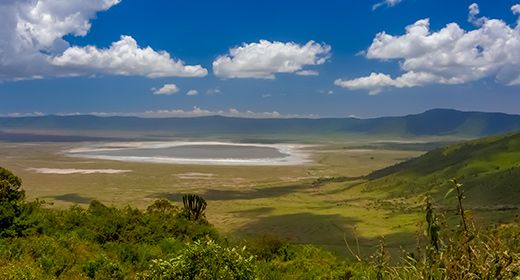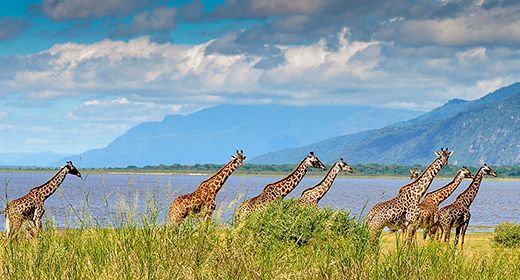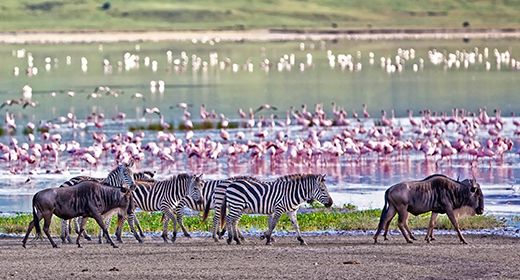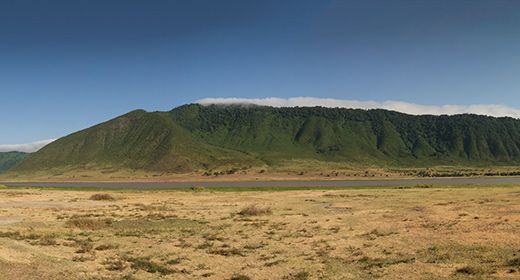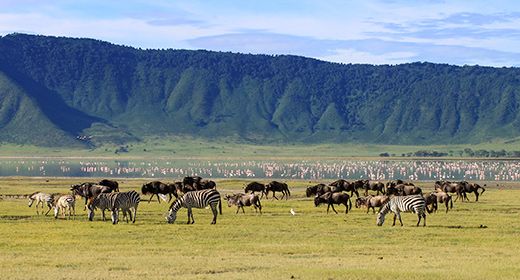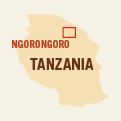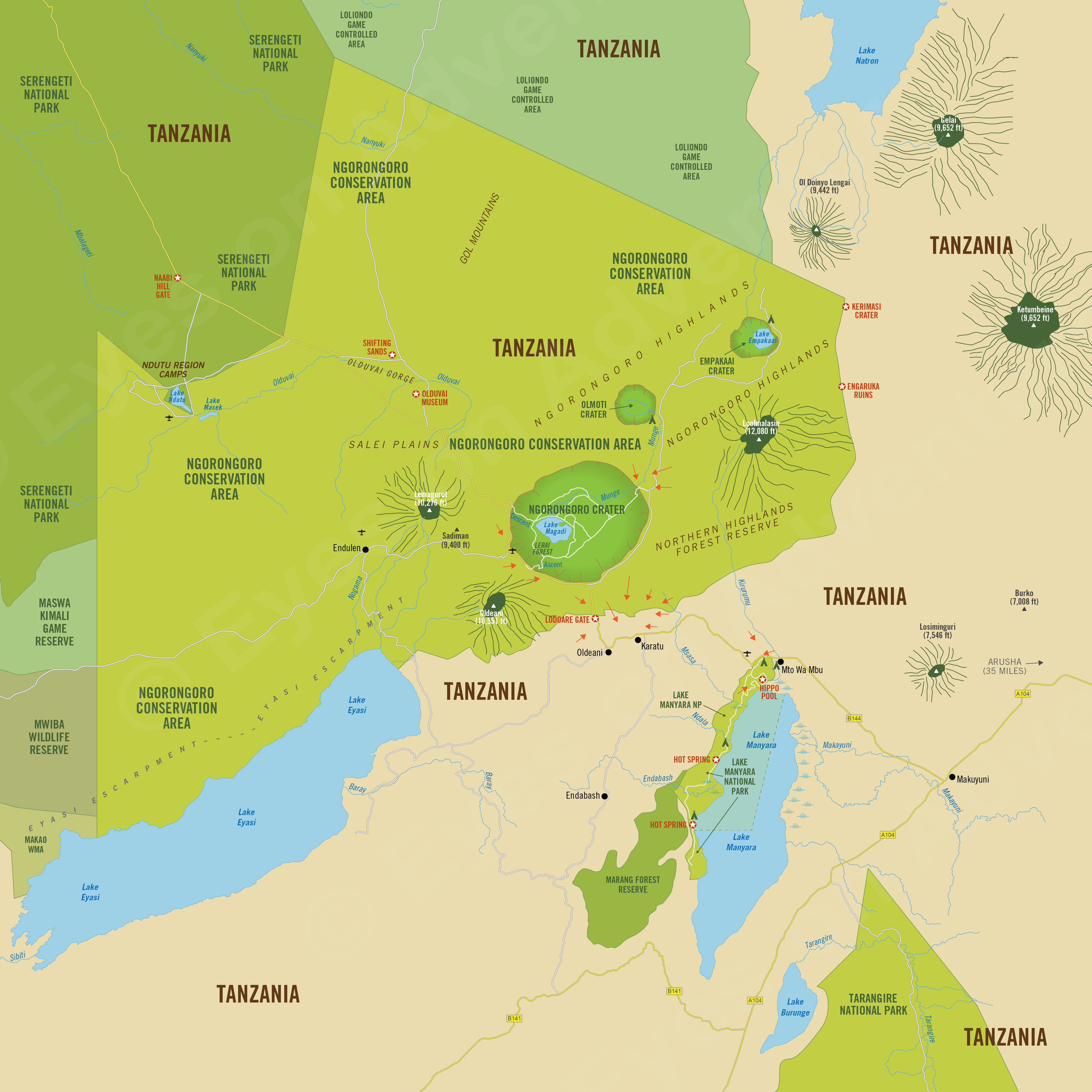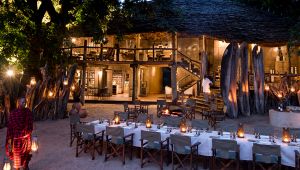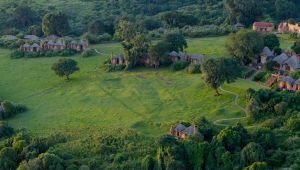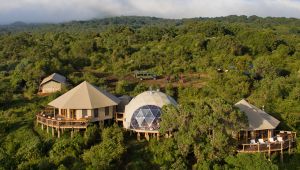Ngorongoro & Manyara
(incl. Ngorongoro Crater, Lake Manyara, Olduvai Gorge, Ndutu)
Region Links: Great Migration, Kilimanjaro & Arusha, Ngorongoro & Manyara, Serengeti, Southern Tanzania, Tarangire, Western Tanzania, Zanzibar
Highlights
- Visit the Ngorongoro Crater, one of Africa's most spectacular wildlife settings
- Explore Lake Manyara National Park for great safaris and tree-climbing lions
- Tour the Olduvai Gorge paleoanthropological site and learn about the origins of humankind
- Visit other craters and peaks in the beautiful Ngorongoro Highlands
- Ngorongoro and Manyara are suggested add-ons for safaris to the Serengeti
EOA Recommends: Gibb's Farm, Lake Manyara Tree Lodge, Lemala Ngorongoro Tented Camp, Ngorongoro Crater Lodge, Sanctuary Ngorongoro Crater Camp
Often called the Eighth Wonder of the World, Tanzania's Ngorongoro Crater is the world's largest intact volcanic caldera and home to Africa's highest density of wildlife.

View of the Ngorongoro Crater from the rim.
The Ngorongoro Conservation Area (NCA) protects an extremely rich and diverse ecosystem that includes the volcanic highlands situated between Africa's Great Rift Valley to the east and the Serengeti Plains to the west. The Ngorongoro Crater is the highlight of the region, but there are numerous other volcanos and calderas, plus forests, plains, rivers, lakes, and fertile valleys.
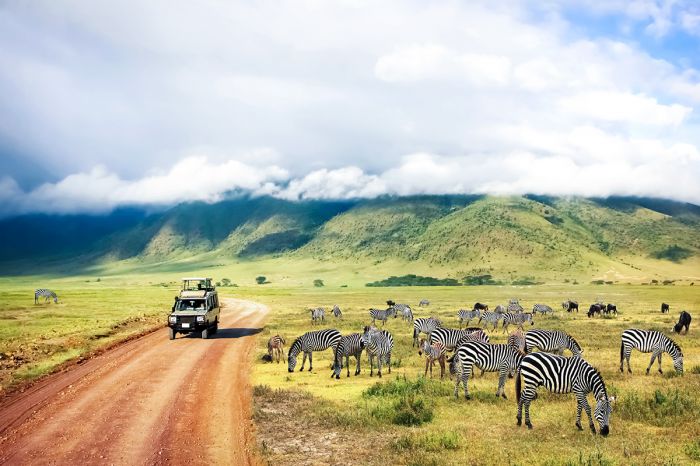
Zebras and wildebeests in the Ngorongoro Crater, Tanzania.
The Ngorongoro Crater is home to an estimated 30 000 large mammals, including all of Africa's Big Five (lion, leopard, elephant, buffalo, rhino), providing incredible game viewing for its daily visitors. Accommodation is not allowed within the crater, so game drives descend from the crater rim and spend the entire day inside the caldera, before ascending back to camp at dusk.
A stone's throw to the southeast is Lake Manyara National Park. Two thirds of this small reserve is taken up by the shallow and alkaline Lake Manyara. Manyara is often overlooked, but its rich forests, woodlands, and swamps offer ideal habitats for diverse wildlife, including elephant, buffalo, hippo, giraffe, various antelope species, and its famous tree-climbing lions.
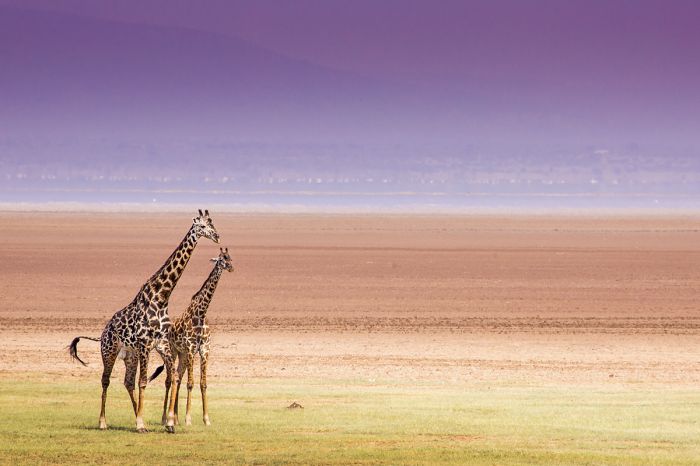
Giraffes in Lake Manyara National Park, Tanzania.
To the west of the highlands towards the Serengeti lies Olduvai Gorge, one of the most important paleo-anthropological sites on Earth, where Mary and Louis Leakey made discoveries about the earliest hominins. The nearby Salei Plains are a hotspot for the annual Great Migration of wildebeest and zebra, which move through the NCA between December and April.
Ngorongoro is Tanzania's most visited wildlife area, attracting some 300 000 tourists from around the world each year and it is one of Africa's must-see destinations. Many safari itineraries begin in Arusha town, driving west towards the Serengeti and stopping to visit both Manyara and Ngorongoro for a few days along the way.
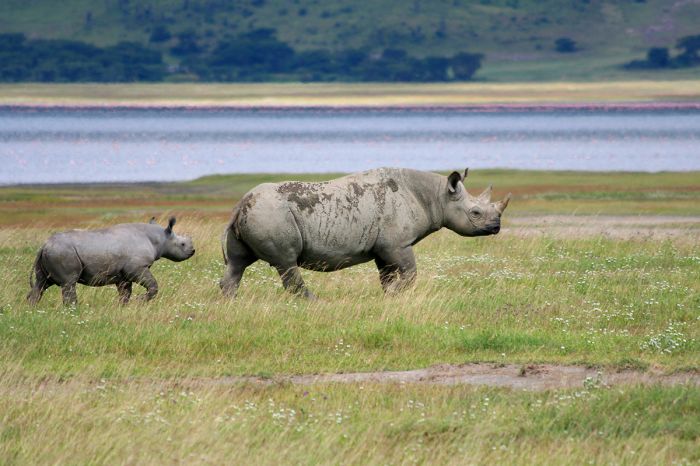
Black rhino with her calf in the Ngorongoro Crater.
Read More...
Empakaai Crater, History, Lake Eyasi, Lake Manyara National Park, Lake Natron, Lake Ndutu, Ngorongoro Conservation Area (NCA), Ngorongoro Crater, Ol Doinyo Lengai, Olduvai Gorge, Olmoti Crater
History
Based on fossils discovered at Olduvai Gorge, early humans have inhabited the Ngorongoro area for at least two million years. These early hunter-gatherers were eventually displaced or assimilated by pastoralist tribes several thousand years ago.
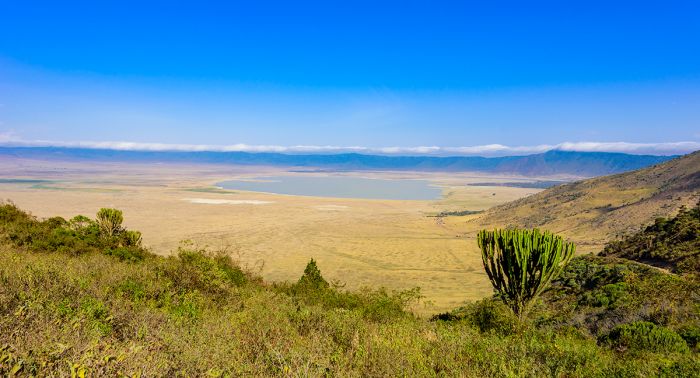
Ngorongoro Crater viewed from the crater rim.
The first Bantu-speaking people migrated south towards present-day Tanzania from the area north of Lake Turkana in northwest Kenya in the 1400s. The first Maasai arrived into the Serengeti lands in the 1600s, forcibly removing or assimilating other ethnic tribes already in the area. By the mid 1800s, the Maasai tribe controlled most of the Great Rift Valley.
The Germans colonized much of Tanzania beginning in the late 1800s, but the Maasai's fierceness kept colonization in the wild northern lands at bay until the early 1900s.
After World War I, Britain was awarded control of what was then German East Africa (present-day Tanzania). Big game hunters soon discovered the wildlife-rich lands of the Serengeti and the wild animals, especially lions, were killed in huge numbers. In order to protect the vanishing wildlife, the British declared a small game reserve of about 800 acres in 1921. This tiny reserve became the foundation for the Serengeti/NCA.
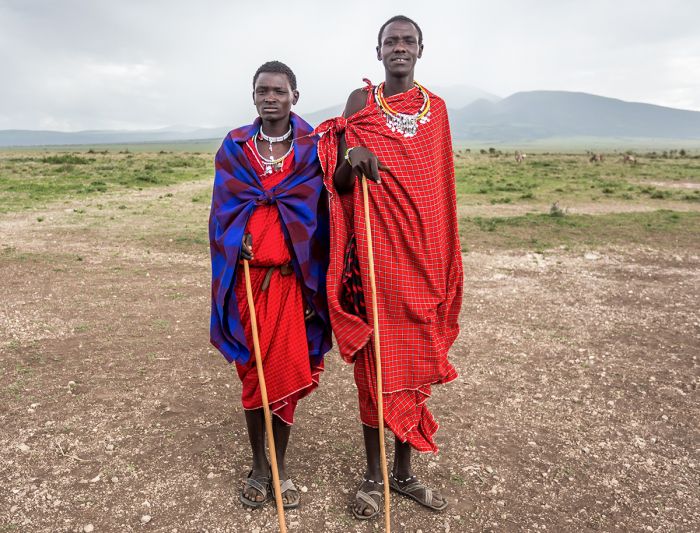
Maasai men in the Ngorongoro region.
In 1928, all hunting and cultivation by local tribes within the Ngorongoro Crater rim was declared illegal, although trophy hunting in the crater continued until the end of the 1930s, when it was finally banned.
Serengeti National Park (SNP) was officially proclaimed in 1951, which at that time included all of the present-day SNP, plus the current Ngorongoro Conservation Area (NCA). After the park's declaration, the British began forcibly evicting the Maasai people from the new SNP, moving them east into the Loliondo region. The Maasai staged multiple protests against their forced removal from their land.
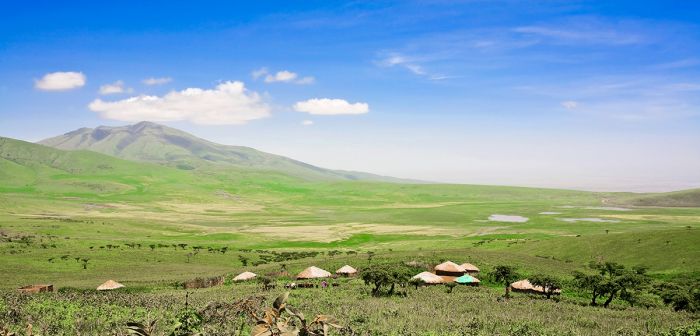
Maasai village in the Ngorongoro Conservation Area (NCA).
A compromise was reached whereby the Ngorongoro Conservation Area (NCA) was separated from the Serengeti National Park and declared a multiple land use area and the Maasai were given rights to live anywhere in the NCA. This resulted in a huge increase in the Maasai population inside the Ngorongoro crater, which was prime cattle grazing habitat.
Maasai settlements within the crater were banned in 1974 and cultivation, which the Maasai were increasingly forced to undertake, in 1975.
The NCA was declared a UNESCO World Heritage Site in 1979 and in 1981, the Serengeti and NCA were jointly declared a UNESCO Biosphere Reserve.
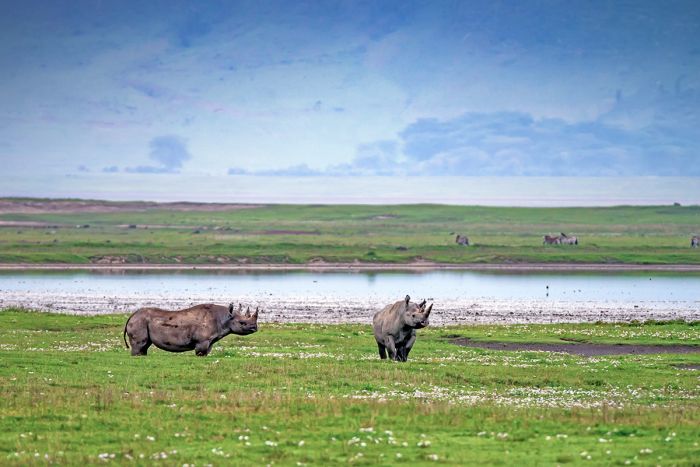
Endangered black rhinos in the Ngorongoro Crater.
Livestock has been banned in the crater since the early 1990s, which has denied the Maasai a critical watering and grazing land for their cattle during the dry season.
In short, the Maasai, like the native Americans in the USA, have been increasingly denied rights to the land they once used for their livelihood and today, a substantial percentage of Maasai are destitute. It is hoped that the authorities will see fit to include the Maasai more in revenue sharing of the lucrative tourism industry in Northern Tanzania.
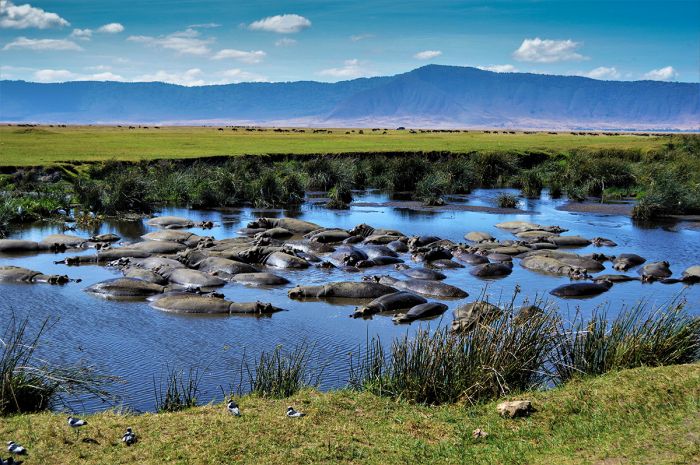
Hippos staying cool at one of the Ngorongoro Crater's hippo pools.
Ngorongoro Conservation Area (NCA)
The 3 200-square-mile (8 300-sq-km) Ngorongoro Conservation Area (NCA) is a UNESCO Biosphere Reserve (declared 1981) and is one of Africa's most diverse regions.
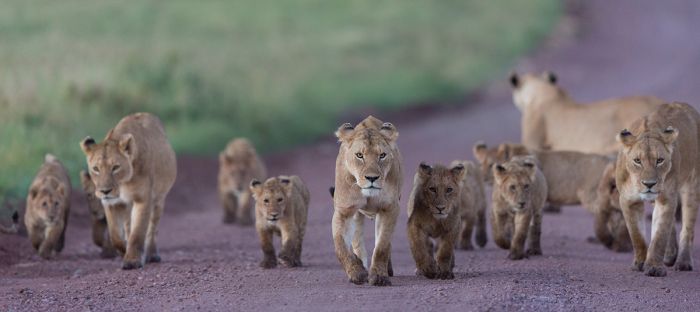
Lions in the Ngorongoro Crater, Tanzania.
The volcanic southeast portion of the NCA consists of a line of eight mostly extinct shield volcanos along the Gregory Rift Escarpment. Five of these volcanos are dome-shaped cones and three are calderas (collapsed volcanos). The Ngorongoro Crater is the largest of the calderas and is one of Africa's greatest eco-tourism destinations, with thousands of large mammals living in the crater. The other two calderas, Olmoti and Empakaai, are smaller but also offer wildlife viewing.
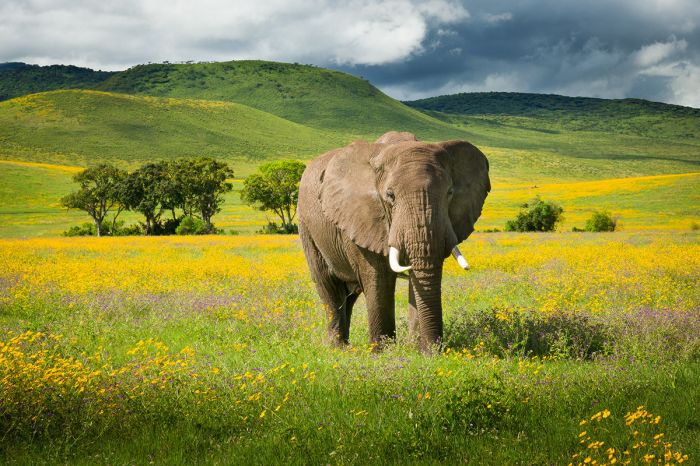
Bull elephant in the Ngorongoro Crater, Tanzania.
The northwest portion of the NCA adjoins with the Serengeti National Park and consists of open plains, the Gol Mountains (consisting of inselbergs), and Olduvai Gorge (where ancient human fossils were discovered).
The far western part of NCA includes the Lake Ndutu Area, which is a very popular destination in the southern Serengeti plains, especially when the migration of wildebeests and zebras are present in huge numbers between December and April. Some of the camps around Ndutu are located in the Serengeti National Park while others are in the NCA.
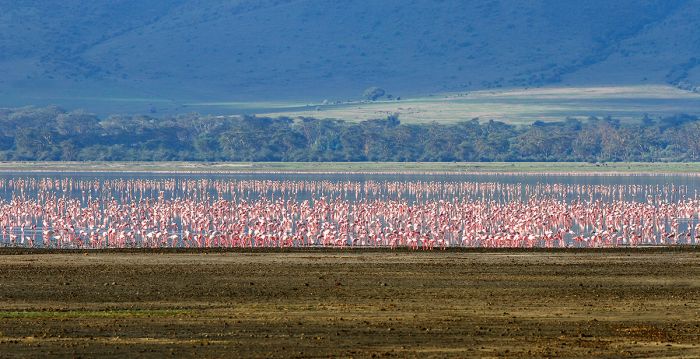
Flamingos gather at Lake Magadi in Tanzania's Ngorongoro Crater.
Ngorongoro Crater
The Ngorongoro Crater was formed when an enormous volcano on the western portion of Africa's Great Rift Valley erupted and collapsed upon itself some 2.5 million years ago. The violent explosion left a 2 000-foot (610-meter) deep, 12-mile (19-km) diameter crater. The crater covers an area of 108 square miles (280 sq kms), which makes it the world's largest intact and un-flooded caldera. The height of the original volcano is estimated to have been as high as 19 000 feet (5 800 meters).
The elevation at the crater rim is 7 500 feet (2 286 meters) and at the crater floor 5 500 feet (1 676 meters).
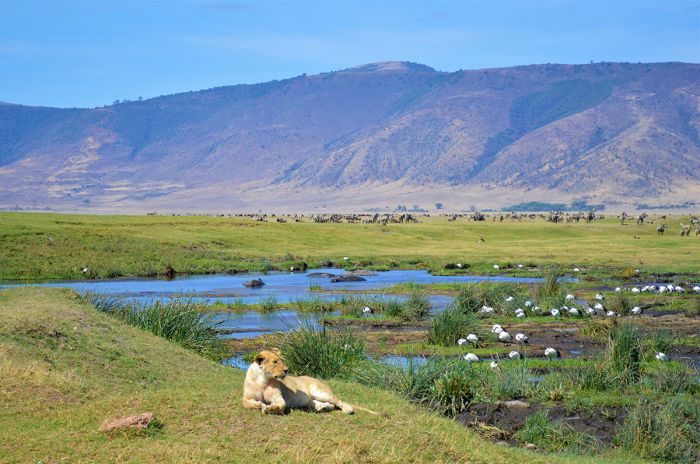
A lioness relaxing in the Ngorongoro Crater.
Today the crater is a haven for wildlife and home to between 25 and 30 thousand large mammals, including Africa's highest density of predators. Eco-tourists descend on to the crater floor every morning for day-long safaris and ascend to their camps, many of which are located along the crater rim, at dusk.
The steep and busy "descent road" is usually bumper-to-bumper when the morning game drives depart down into the crater at dawn. Thick mist floats through the highland forest along the rim and upper crater wall, creating an ethereal atmosphere, with birds singing and eager tourists awaiting their first exploration into the crater. The misty forest is mesmerizing in the early morning, with ancient trees, epiphytes, ferns, orchids and tree moss.
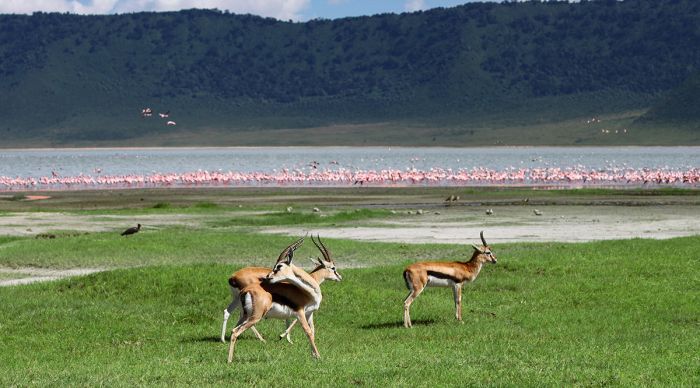
Thomson's gazelles in the Ngorongoro Crater.
The main feature on the crater floor is Lake Magadi, a shallow soda lake which size is dependent upon recent rainfall. The lake supports huge numbers of flamingos, especially during the dry season. On the lake's western shore is a cluster of stone burial cairns, which are thought to have been left by the Datoga people, who occupied the crater before the arrival of the Maasai.
Wildlife in the crater is diverse and includes all of Africa's Big Five (lion, leopard, buffalo, elephant, rhino). Four of the five are a virtual guarantee on a day-long safari, with leopard being the toughest to find. Black rhinos number around twenty individuals. Lion numbers vary between 50 and 80, while the most abundant predator in the crater is the spotted hyena, which number between three and four hundred. Both golden and black-backed jackal are present in good numbers.
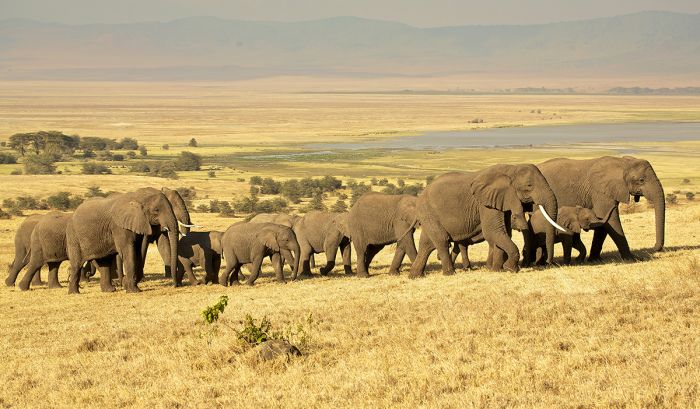
A breeding herd of elephant in the Ngorongoro Crater.
The lovely Lerai Forest on the southern side of Lake Magadi consists almost entirely of yellow fever tree Acacias. The forest is home to bushbuck, waterbuck, and eland. There are also several hippo pools in the crater.
Open grassland covers much of the crater floor, offering ideal habitat for grazing herbivores. Wildebeest and zebra are very common, as well as smaller numbers of buffalo, Thomson's gazelle, Grant's gazelle, hartebeest, mountain reedbuck, warthog, and topi. Elephants range throughout the crater and even climb in and out entirely. Some of the country's biggest and oldest bull elephants are full-time residents. Two species absent from the crater itself are giraffe and impala, although the occasional giraffe has been known to visit the crater, but they never stay long.
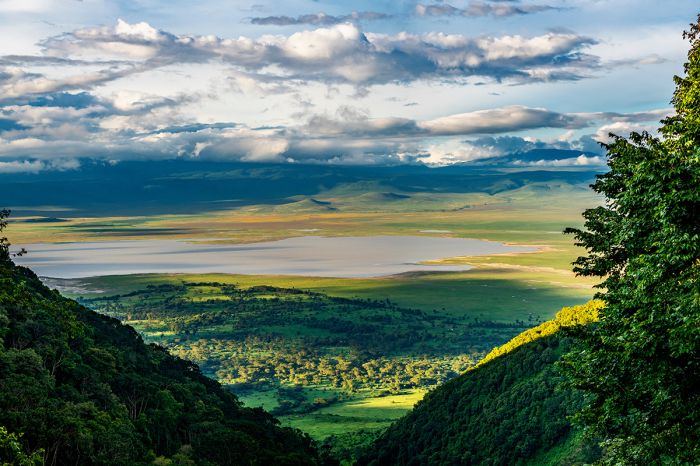
View of the Ngoronogo Crater, showing the Lerai Forest and Lake Magadi.
Birding in the crater is very good, with flamingos often found on Lake Magadi, as well as abundant water birds in the swamp areas. The kori bustard is commonly seen, as are ostrich and several species of vulture. Over 280 species of bird have been recorded in the crater.
Strict adherence to the crater's game drive rules are enforced and there is no off-road driving. Visitors must stay in their vehicles except at designated picnic spots.
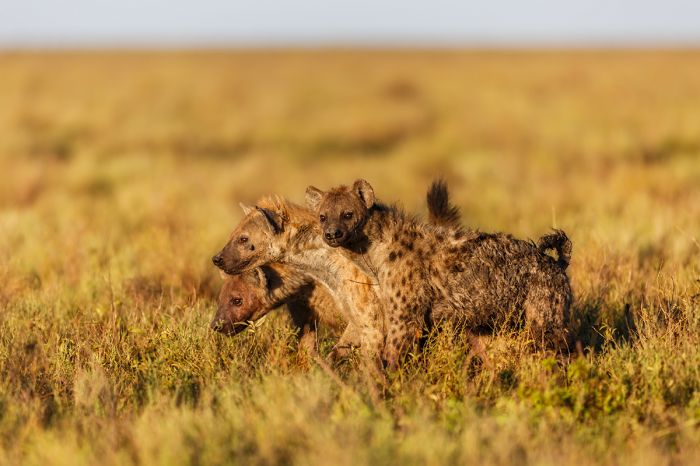
Spotted hyenas are the most abundant predator in the Ngorongoro Crater.
Olmoti & Empakaai Craters
Besides the Ngorongoro Crater, the NCA protects two other beautiful, albeit smaller craters: Olmoti and Empakaai. Neither can match the Ngorongoro Crater for wildlife, but both offer spectacular walking safaris into and around the craters, with almost no tourists. Both craters are easily reached from camps in the region on a day trip. The local Maasai people have some small settlements around these craters.
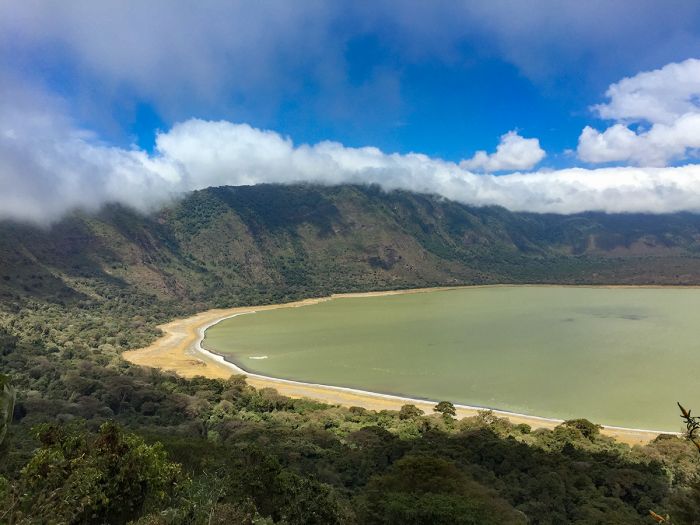
View into the Empakaai Crater, showing Lake Empakaai.
The 1770-foot (540-meter) deep, 38-mile (61-km) wide Empakaai Crater is dominated by a 200-foot (60-meter) deep soda lake, which covers almost half of the crater floor. The elevation at the crater rim is 10 564 feet (3 220 meters) and at the crater floor 8 793 feet (2 680 meters).
The crater is incredibly beautiful, with steep, forested walls. The only way to reach the crater floor and the lake is on foot. Thousands of flamingos frequent Lake Empakaai, as well as a variety of other waterfowl. Leopards are present, although seldom seen, but elephants may be seen. Other mammals include buffalo, bushbuck, and blue monkey, which are most often seen along the crater's rim. Bird life is diverse and abundant.
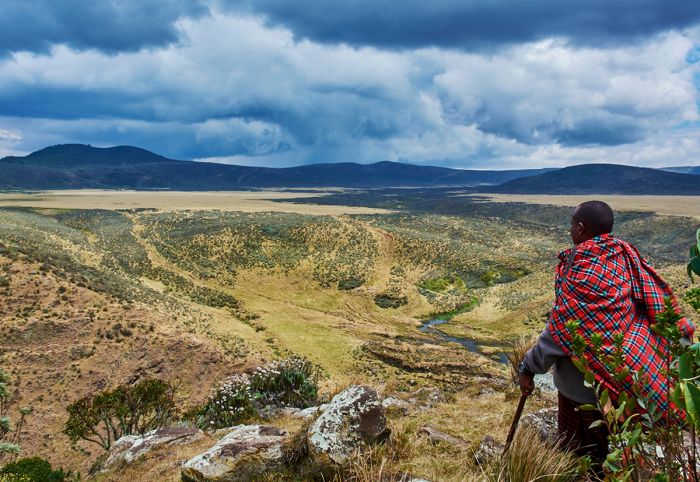
A Maasai guide leads a hike into the Olmoti Crater.
The shallow Olmoti Crater is dominated by grasslands and supports good populations of grazers, including Bohor reedbuck and buffalo. The crater is also used for grazing by local Maasai and their cattle. The seasonal Munge River and waterfall flows out of the crater and winds its way into the Ngorongoro Crater.
The elevation at the crater rim is 9 974 feet (3 040 meters) and at the crater floor 9 186 feet (2 800 meters).
Olduvai Gorge
The Olduvai Gorge is a 30-mile-long (48-kms) ravine in the Salei Plains, northwest of the Ngorongoro Crater. The steep-sided gorge reaches almost 500 feet (150 meters) deep in places. The ravine was carved out of the terrain by the Olduvai River. Locals call it "Oldupai", which is the Maasai name for the sisal plant, which is abundant in the area around the gorge.
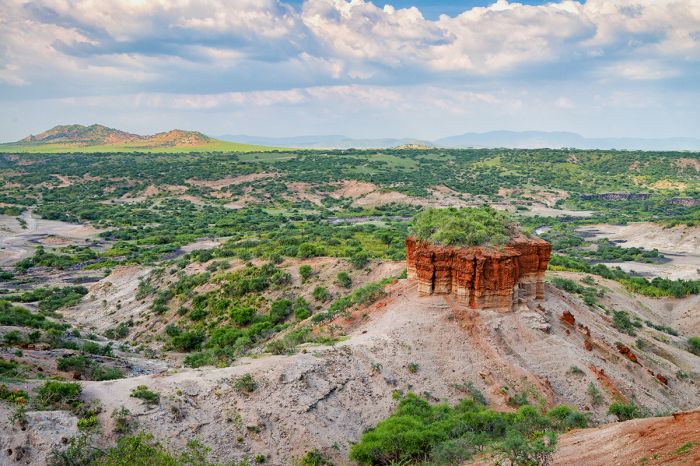
Olduvai Gorge, a paleo-anthropological site in the Ngorongoro region of Tanzania.
Olduvai has been instrumental in our understanding of the origins of humankind, with the fossilized remains of dozens of hominids dating back almost two million years found in the gorge.
In 1911, Wilhelm Kattwinkel, a German paleontologist and neurologist, undertook an expedition to German East Africa (present-day Tanzania) to investigate sleeping sickness. By chance, he discovered the fossilized remains of a three-toed horse in the Olduvai River gorge and brought them back to Germany. In 1913, a subsequent German expedition to Olduvai found the first fossils of hominids at the site.
In 1931, Louis Leakey, a British paleoanthropologist and archaeologist, led an expedition to Olduvai to begin excavating the site. For nearly three decades, Leakey and his wife Mary worked the site to find evidence of ancient humans, but until 1959, they only succeeded in finding stone tools dating back from 1.8 to 1.2 million years.
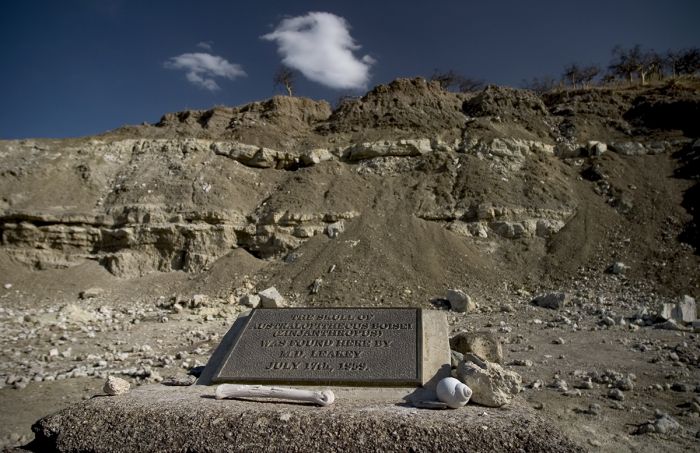
A plaque commemorating the 1959 discovery of Australopithecus boisei.
In 1959, the Leakey's discovered the skull of the 1.75-million-year-old Australopithecus boisei, nicknamed "Nutcracker Man". This was the oldest-known hominid fossil discovered at that time, but it was later determined to be a dead-end and not our ancestor.
Further excavations led to the discovery of two other hominid species, Homo habilis ("handy man") and Homo erectus ("upright man"), both of which lived contemporaneously with Nutcracker Man. These are the earliest known and named species of the Homo genus and are almost certainly linked to our present-day species, Homo sapiens.
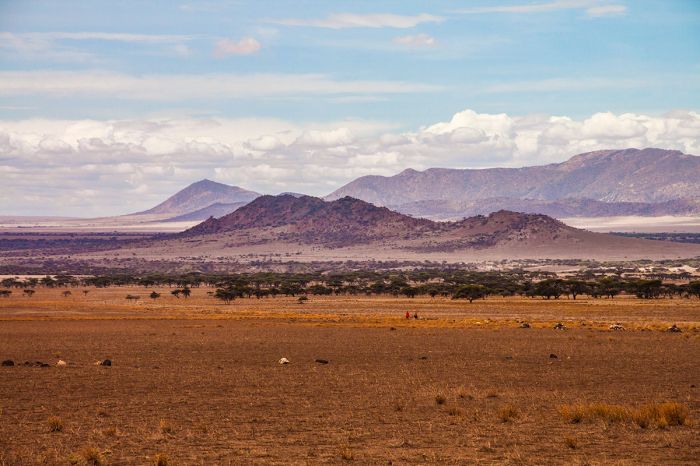
The Salei Plains, south of the Olduvai River, Tanzania.
Guided walking tours of the gorge are highly recommended and the nearby Olduvai Museum is a small but extremely informative museum and well worth the time to visit.
Also worth seeing are the Shifting Sands, a series of crescent-shaped black-colored sand dunes composed of volcanic ash and located just beyond the northern edge of the gorge. The dunes are moving east at a rate of about 50 feet (15 meters) per year and are estimated to be about 3 million years old.
Lake Ndutu
Lake Ndutu is a shallow, seasonal soda lake located in the far Southern Plains of the Serengeti National Park, but on the border with the Ngorongoro Conservation Area (NCA). Numerous seasonal safari camps are set up on around Lake Ndutu and nearby Lake Masek to take advantage of the wildebeest migration. Some of the migration camps are located in the Serengeti and some are in the NCA.
The wildebeest and zebra migration spend time around Ndutu from December thru April, with most of the wildebeests having their babies on the plains in February.
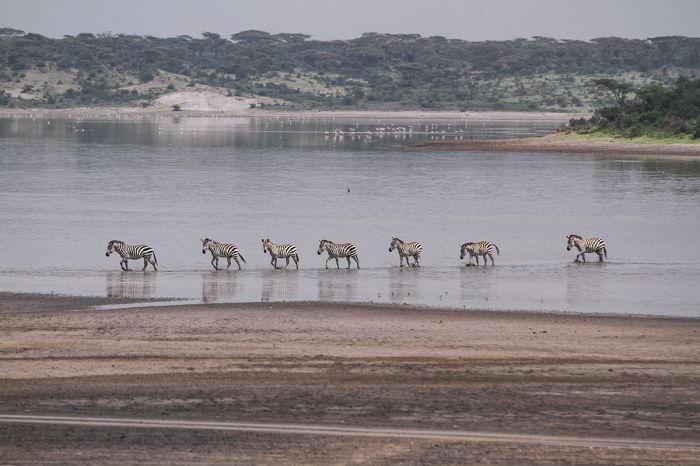
Zebra's and flamingos in Lake Ndutu, on the Ngorongoro / Serengeti border.
Lake Manyara National Park
Covering only 127 square miles (330 sq kms), Lake Manyara National Park is located only 20 miles (32 kms) southeast of Ngorongoro Crater. Two-thirds of the park's area is comprised of the waters of Lake Manyara.
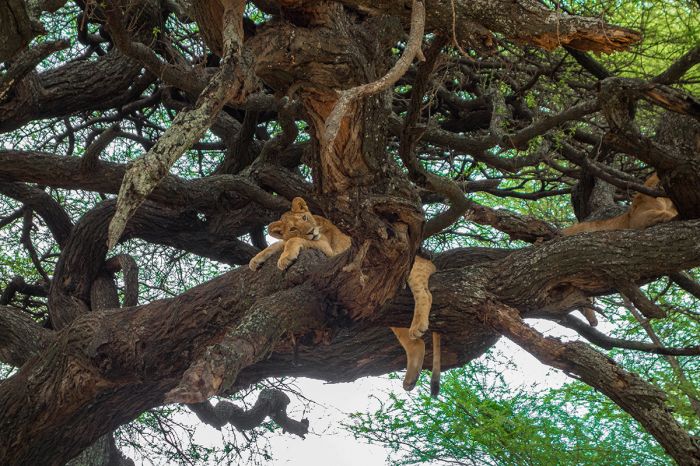
Lake Manyara is known for its tree-climbing lions.
The lake covers 181 square miles (470 sq kms) and is Tanzania's seventh largest lake by surface area. Manyara's waters are shallow (maximum depth is 6ft/1.8m) and alkaline (pH of ~9.5) and is an an endorheic basin (no outflows). The lake is fed by underground springs, seasonal rivers and streams, but more than 99% comes from direct rainfall. As a result, the area covered by the lake fluctuates significantly year to year, based on local precipitation. In some years the lake water may evaporate almost completely.
The national park is located along the northwest quadrant of the lake and encompasses diverse habitats, including evergreen groundwater forest in the north (fed by underground springs), grassy floodplains, Acacia woodlands, extensive marshlands, saline mud flats that expand as the lake dries seasonally, and rocky escarpments along the western edge of the park with some lovely baobab trees. A series of sulfurous hot springs on the western shore of the lake are worth visiting.
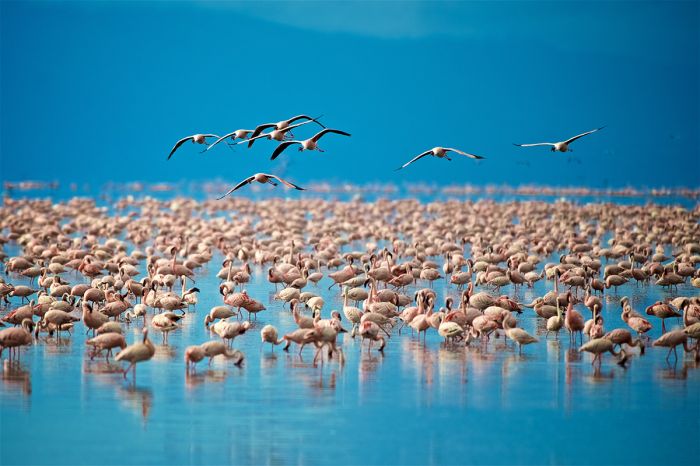
Lesser flamingos in Lake Manyara, Tanzania.
Manyara's wildlife is diverse but not on a scale of the Serengeti. Elephants are common and generally very relaxed around vehicles. Other mammals with good populations include buffalo, hippo, giraffe, impala, zebra, waterbuck, wildebeest, bushbuck, warthog, and klipspringer. Olive baboons, vervet monkeys, and blue monkeys are quite common in the forests.
Manyara is also somewhat famous for its tree-climbing lions, which are thought to have learned this behavior to escape insects and also to remain cooler during the heat of the day. This behavior is not unique to Manyara, but they seem to do this more regularly here. Leopards are present, but less often seen.
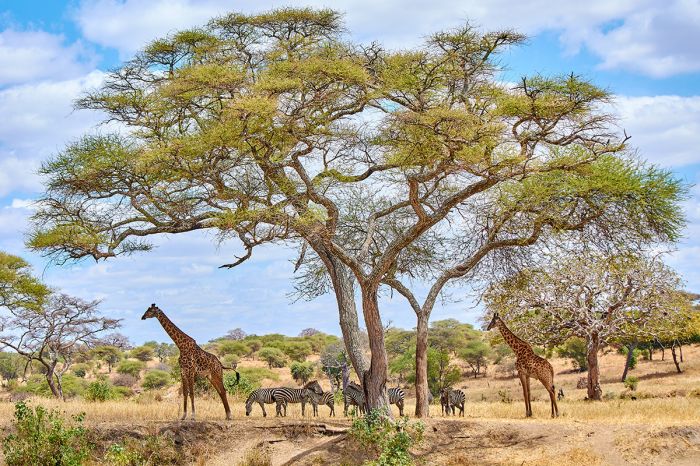
Giraffes and zebras under an Acacia tree, Lake Manyara National Park, Tanzania.
Birding is very good in the park and along the lake shores, with 380 species recorded. Flamingos are seasonal visitors to the lake, where they feed on the lake's algae in huge numbers.
Manyara is often included on safari itineraries that start in Arusha, stopping for some days in Tarangire, Manyara, and Ngorongoro, before heading to the Serengeti.
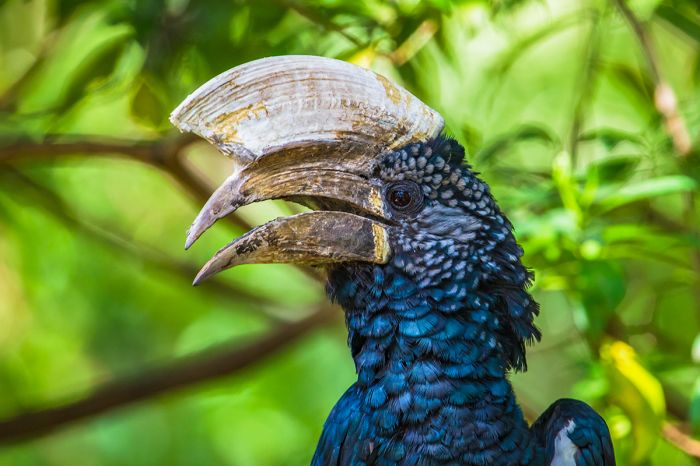
A silvery-cheeked hornbill in Lake Manyara National Park.
Lake Eyasi
The remote and seasonally flooded Lake Eyasi is located below the Eyasi Escarpment, a 2600-foot (800-meter) high portion of the Western Rift Valley wall. During years with plentiful rainfall, this shallow lake covers 50 miles (80 kms) in length, but in drier periods the lake can become completely dried and nothing more than a massive white crust. Most years, it is somewhere between the two extremes, with the desolate waters surrounded by mud flats and acacia scrub.
There is not much wildlife other than baboons and dik-dik antelopes. During water years, thousands of flamingos and other waterfowl gather on the lake. The local Hadza people live around the lake in small villages.
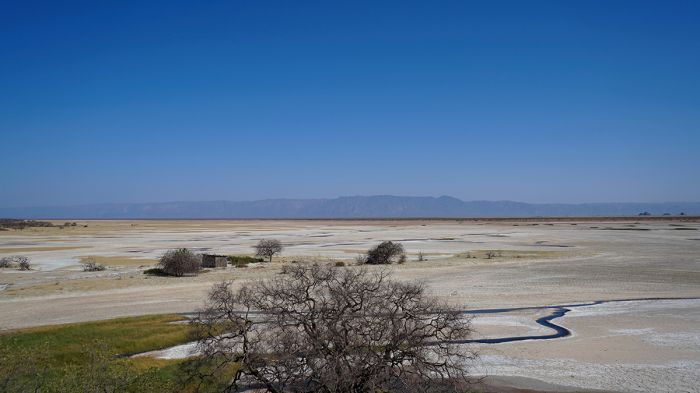
The stark landscape around Lake Eyasi, Tanzania.
Lake Natron
Estimated to be 1.5 million years old, Lake Natron is a low-lying, shallow (10 feet/3 meters deep at most), extremely alkaline (pH of 9-12) lake along the Gregory Rift. The temperature around the lake is commonly above 100°F/38°C, so evaporation of the lake's water is rapid, resulting in high levels of salinity in the lake. Massive numbers of flamingos gather on the lake (in good rain years) between August and October to feed on the algae growing the the saline waters.
Natron's skyline is dominated by the Ol Doinyo Lengai and Gelai volcanos to the south. The lake is fed by the Ewaso N'giro River in the north and runoff from the volcanos in the south.
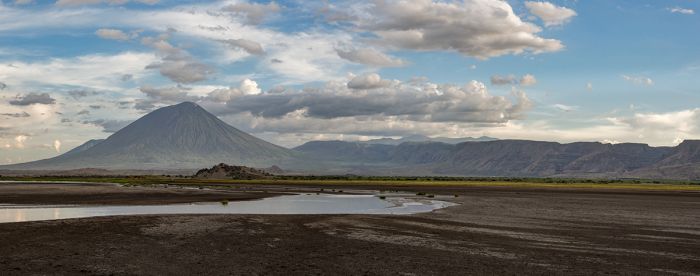
View of Ol Doinyo Lengai volcano from the southern shore of Lake Natron.
Ol Doinyo Lengai
Estimated to be 350 to 400 thousand years old, Ol Doinyo Lengai (meaning "Mountain of God" in the language of the Maasai) is an active volcano that has experienced almost continuous low-level activity at least since 1883, when the first records were made by European explorers to the region. Several major and minor eruptions have occurred since then, the last of which were in 2007-2008.
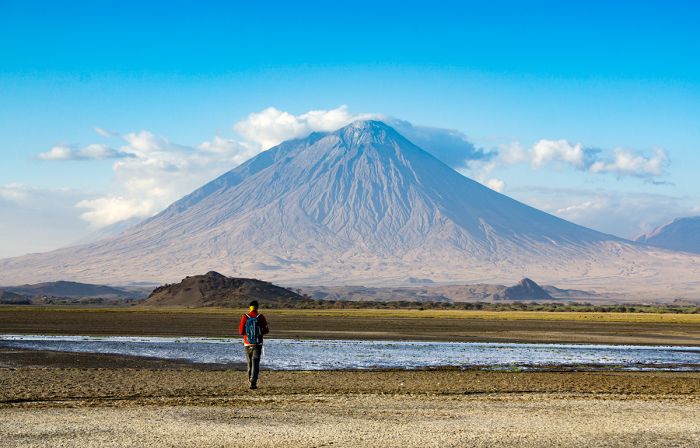
Ol Doinyo Lengai volcano, Tanzania,
Lengai is unique amongst active volcanos in that it emits carbonate lava. Most volcano lava is rich in silicate minerals, but Lengai's lava contains almost no silicon, is roughly fifty percent cooler than other lavas, and is very fluid, with a water-like viscosity. Adventurous trekkers can climb with a guide to the summit of Lengai in five to six hours plus two hours for the descent.
Read More...
Empakaai Crater, History, Lake Eyasi, Lake Manyara National Park, Lake Natron, Lake Ndutu, Ngorongoro Conservation Area (NCA), Ngorongoro Crater, Ol Doinyo Lengai, Olduvai Gorge, Olmoti Crater
Ngorongoro
Great Good Fair Poor
- Jan
- Feb
- Mar
- Apr
- May
- Jun
- Jul
- Aug
- Sep
- Oct
- Nov
- Dec
The Ngorongoro Crater offers great wildlife viewing all year. This is because of its unique ecosystem and the fact that most of the animals living in the crater never leave.
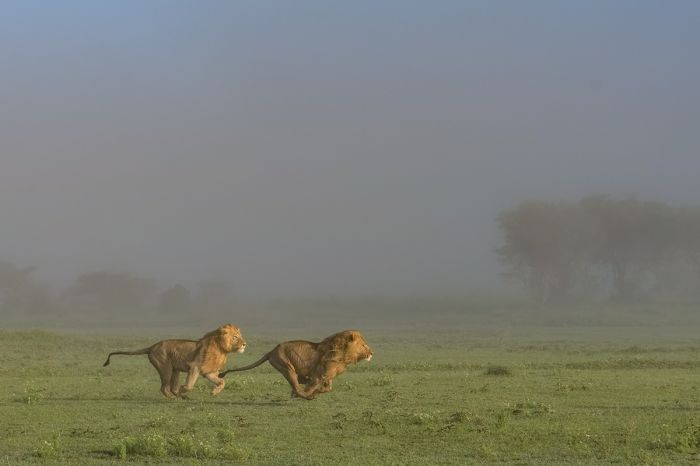
Male lions on the move near Lake Ndutu, Tanzania.
Northern Tanzania's rain occurs only between November and May, with two distinct rain seasons. The "Long Rains" in April/May (called the "masika") afternoon showers on a near daily basis, while the "Short Rains" (called the "mvuli") fall from mid-November to mid-December and are generally lighter and less impactful to safari activities. January and February do experience rain, but it is unpredictable and sporadic.
The roads into and out of the crater can be difficult during the rains.
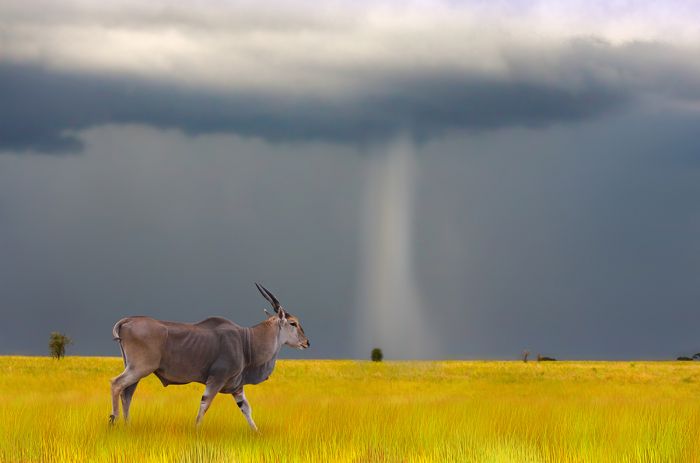
Eland and rains in the Ngorongoro Conservation Area (NCA).
Ngorongoro's climate is generally mild, but temperatures in the Ngorongoro Highlands are of course dependent on elevation, with chilly to cold nights the norm at higher altitudes. The Ngorongoro Crater is the top attraction in the NCA and both the crater rim (7500ft/2286m) and the crater floor (5500ft/1676m) are at much higher elevation than the NCA's surrounding plains to the west.
Conditions inside the crater are pleasant during the day when game drives are allowed, with temps averaging 68-73°F (20-23°C). Accommodations for the crater are up on the rim or further outside the caldera, where nighttime temps drop significantly and can approach freezing in the dry season (Jun-Oct) and average 42°F (5°C) in the rainy season (Nov-May).
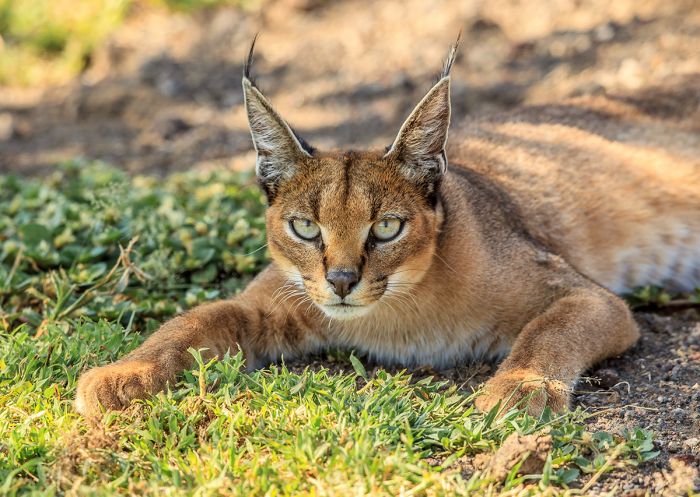
A caracal in the Ngorongoro Crater, Tanzania.
The Migration
The spectacular annual migration of 1.5 to 2 million wildebeests and several hundred thousand zebras are northern Tanzania's biggest wildlife attraction. The migrating herds are truly something to see and most safaris to Ngorongoro also include days in the Serengeti to experience this spectacle.
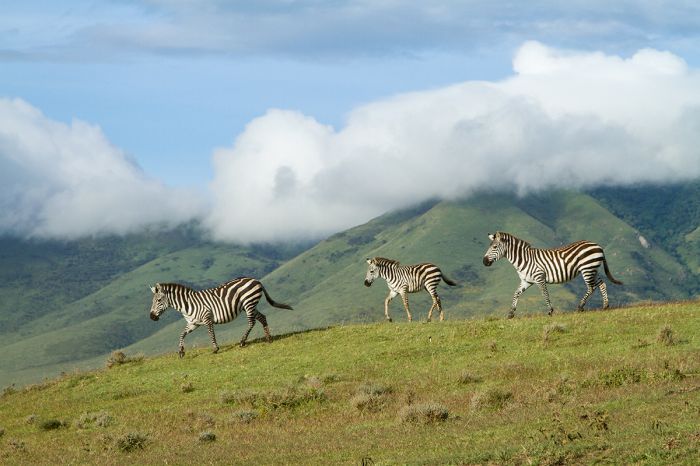
Zebras in the Ngorongoro Conservation Area (NCA).
Most of the migration stays west of the highlands, where thousands of animals move through the western portion of the NCA, especially around Lake Ndutu, where they spend the months of December thru April. Wildebeest calving occurs in the southern Serengeti and Ndutu in February. There are numerous safari camps that are set up on a seasonal basis to best see the migration throughout the Serengeti, including the Lake Ndutu Area.
lake manyara
Great Good Fair Poor
- Jan
- Feb
- Mar
- Apr
- May
- Jun
- Jul
- Aug
- Sep
- Oct
- Nov
- Dec
Lake Manyara National Park is open all year. The rainy season (November through May) can mean limited road access, with game drives being mostly restricted to the far north. The "short" rains occur in November/December and are not generally an issue for game drives, but the heavier "long" rains in April may interfere with safari activities.
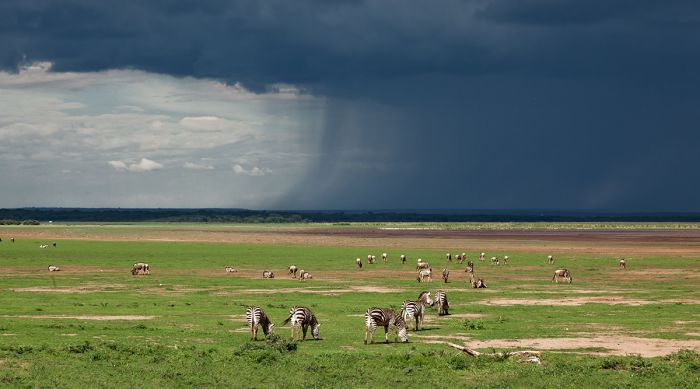
An approaching storm in Lake Manyara National Park.
Large mammals are best seen from late June through September and again in January-February. The high season can mean some crowds, especially in the northern section. Birding in Manyara is superb from November thru May.
Manyara's climate is typically mild and comfortable every day, but nights and early mornings can be chilly. Dry season (Jun-Oct) temps average 76°F (24°C) during the day, with nights falling to 55°F (13°C). Wet season daytime temps average 80°F (27°C) and night temps average 60°F (15°C).
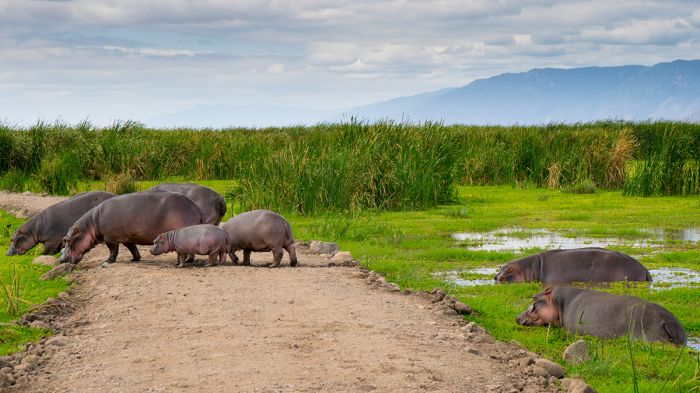
Hippos in Lake Manyara National Park, Tanzania.
Showing 1–4 of 4 results
The only lodge in the remote southern section of Lake Manyara NP, which means an exclusive experience. Diverse park with plenty of wildlife. Activities include game drives, walking, biking, and cultural visits.…
Situated on the rim of the Ngorongoro Crater, one of the best wildlife destinations in Africa. Incredible views into the crater, superb wildlife viewing, plus hiking, sightseeing, and cultural activities.…
Located in a remote area on the slopes of the extinct Olmoti Volcano. Easy access to all three craters, including Ngorongoro, which is one of Africa's best wildlife destinations. Crater hikes, game drives, good birding, cultural experiences with the local Maasai.…




